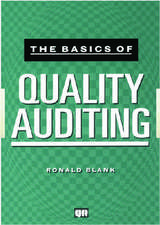FT Guide to Using and Interpreting Company Accounts
Autor Wendy Mckenzieen Limba Engleză Paperback – 3 dec 2009
Wendy McKenzie approaches the project via three key points: What information will I find in these accounts?; How do I analyse the accounts?; How can I use my analysis?
Using publicly available actual accounts, the book begins by covering the 'numbers' from company accounts then moves on to information such as the financial review and then explains the logic of the accounts. To help with the interpreting of the numbers Wendy shows the reader how to understand issues such as cash flow, what this will tell you about a company, how to consider a competitor's accounts and how to perform ratio calculations to help with company analysis.
Preț: 230.52 lei
Nou
44.12€ • 47.94$ • 37.09£
Carte disponibilă
Livrare economică 31 martie-14 aprilie
Livrare express 14-20 martie pentru 53.83 lei
Specificații
ISBN-10: 0273723960
Pagini: 560
Ilustrații: illustrations
Dimensiuni: 183 x 231 x 30 mm
Greutate: 1 kg
Ediția:Nouă
Editura: Pearson Education
Locul publicării:Harlow, United Kingdom
Descriere
Wendy McKenzie approaches the project via three key points: What information will I find in these accounts?; How do I analyse the accounts?; How can I use my analysis?
Using publicly available actual accounts, the book begins by covering the ‘numbers’ from company accounts then moves on to information such as the financial review and then explains the logic of the accounts. To help with the interpreting of the numbers Wendy shows the reader how to understand issues such as cash flow, what this will tell you about a company, how to consider a competitor’s accounts and how to perform ratio calculations to help with company analysis.
Cuprins
Table of Contents
Preface
PART 1 WHAT INFORMATION WILL I FIND IN THE ACCOUNTS?
1 An introduction to the accounts
2 The profit and loss account
3 The balance sheet
4 The cash flow statement
5 The statement of total recognised gains and losses
6 The note of historical cost profits and losses
7 Other information found in the accounts
8 International conventions – local GAPP, IFRS, emerging nations
PART 2 HOW DO I ANALYSE THE ACCOUNTS?
9 How do I analyse the accounts?
10 Solvency
11 Profitability
12 Cash management
13 The investor’s perspective
14 Johnson Matthey
PART 3 HOW CAN I USE MY ANALYSIS?
15 How can I use my analysis?
16 Suppliers’ accounts
17 Customers’ accounts
18 Competitors’ accounts
19 Identifying a company’s acquisition potential
20 The availability of accounts
Weblinks
Index
Notă biografică
Textul de pe ultima copertă
The Financial Times Guide to Using and Interpreting Company Accounts is designed for the non-accountant manager, investor or entrepreneur who is expected to have financial knowledge but may not have accounting training.
Wendy McKenzie approaches the project via three key points: What information will I find in these accounts?; How do I analyse the accounts?; How can I use my analysis?
Using publicly available actual accounts, the book begins by covering the 'numbers' from company accounts then moves on to information such as the financial review and then explains the logic of the accounts. To help with the interpreting of the numbers Wendy shows the reader how to understand issues such as cash flow, what this will tell you about a company, how to consider a competitor's accounts and how to perform ratio calculations to help with company analysis.























